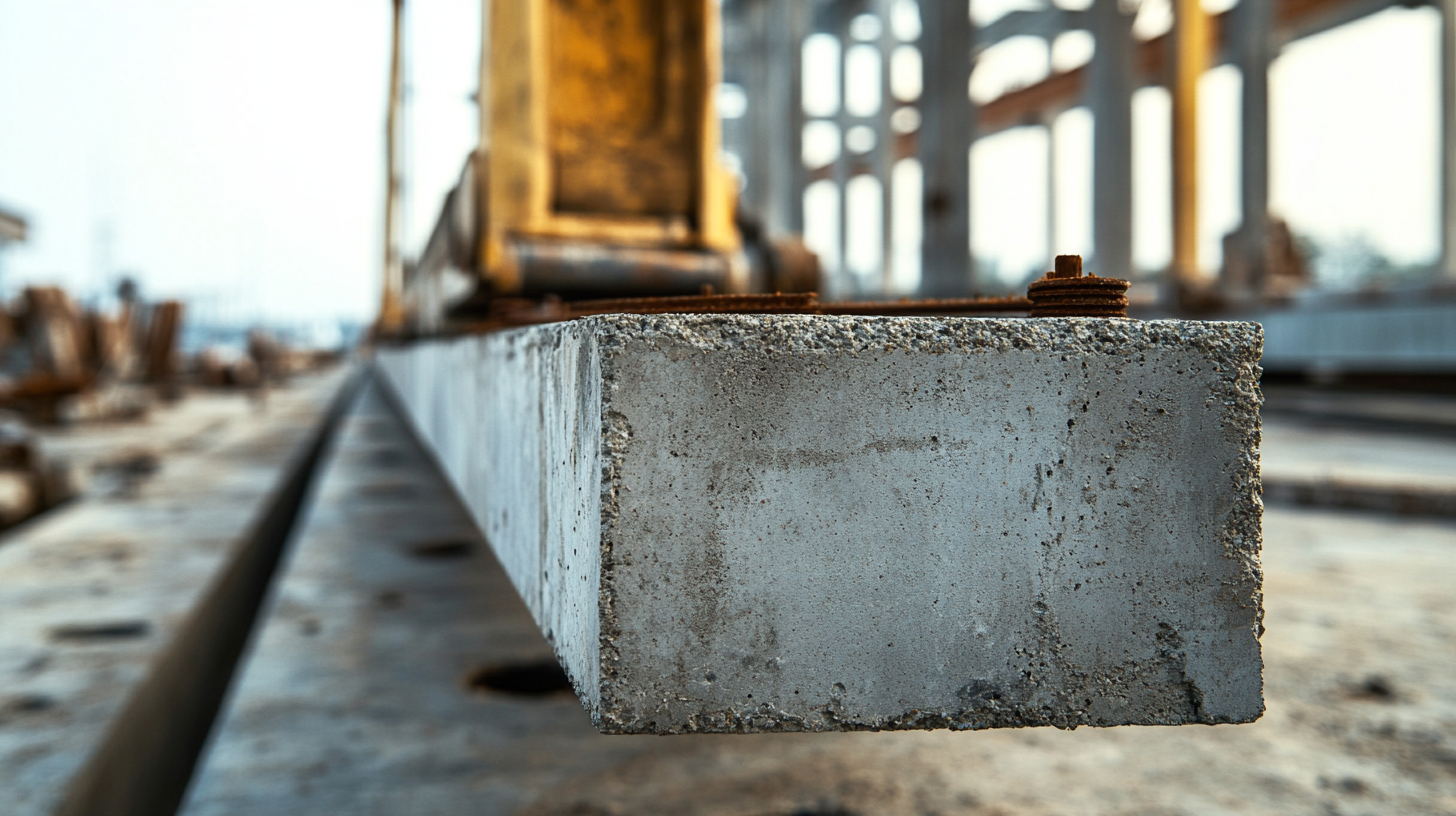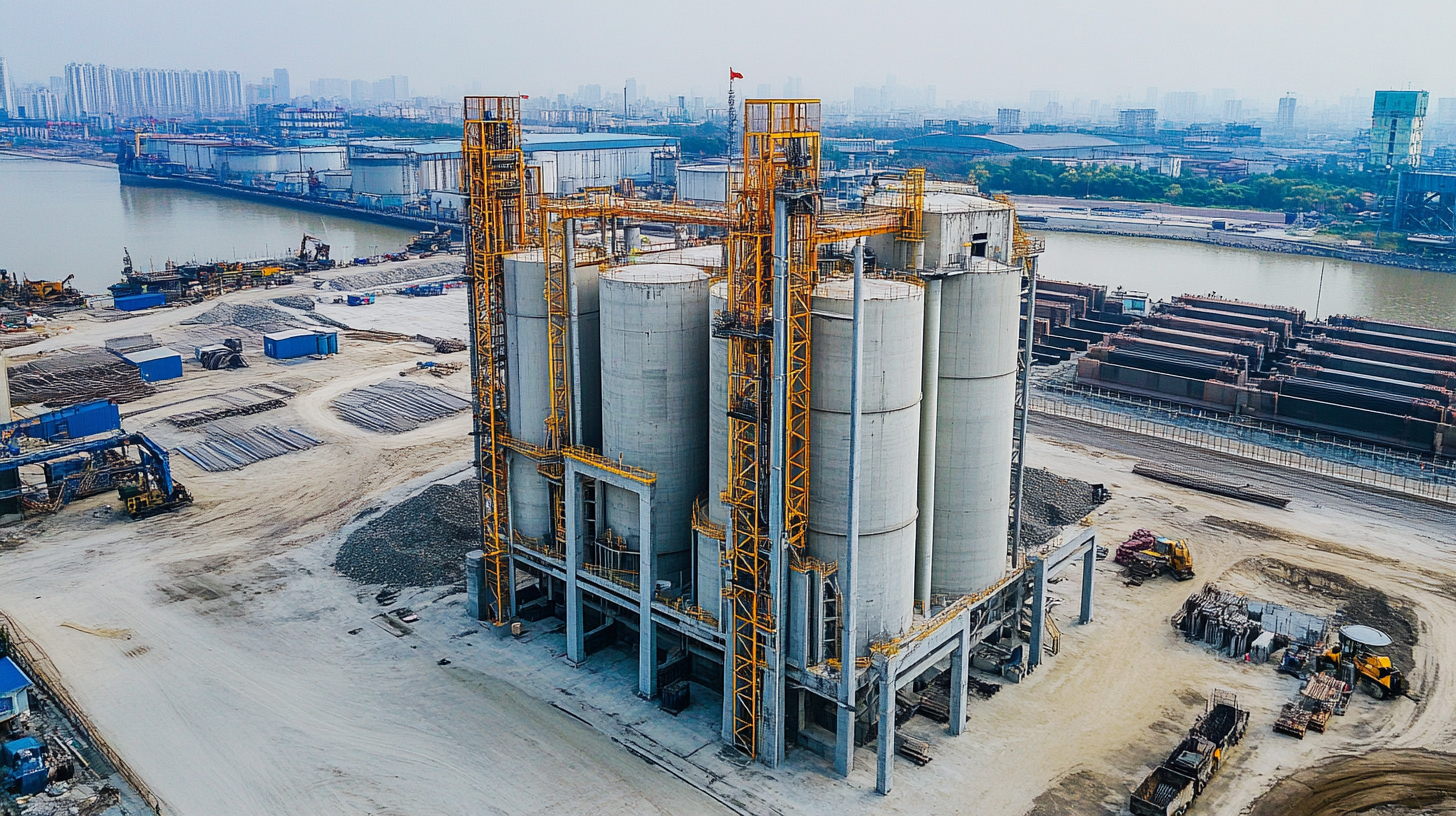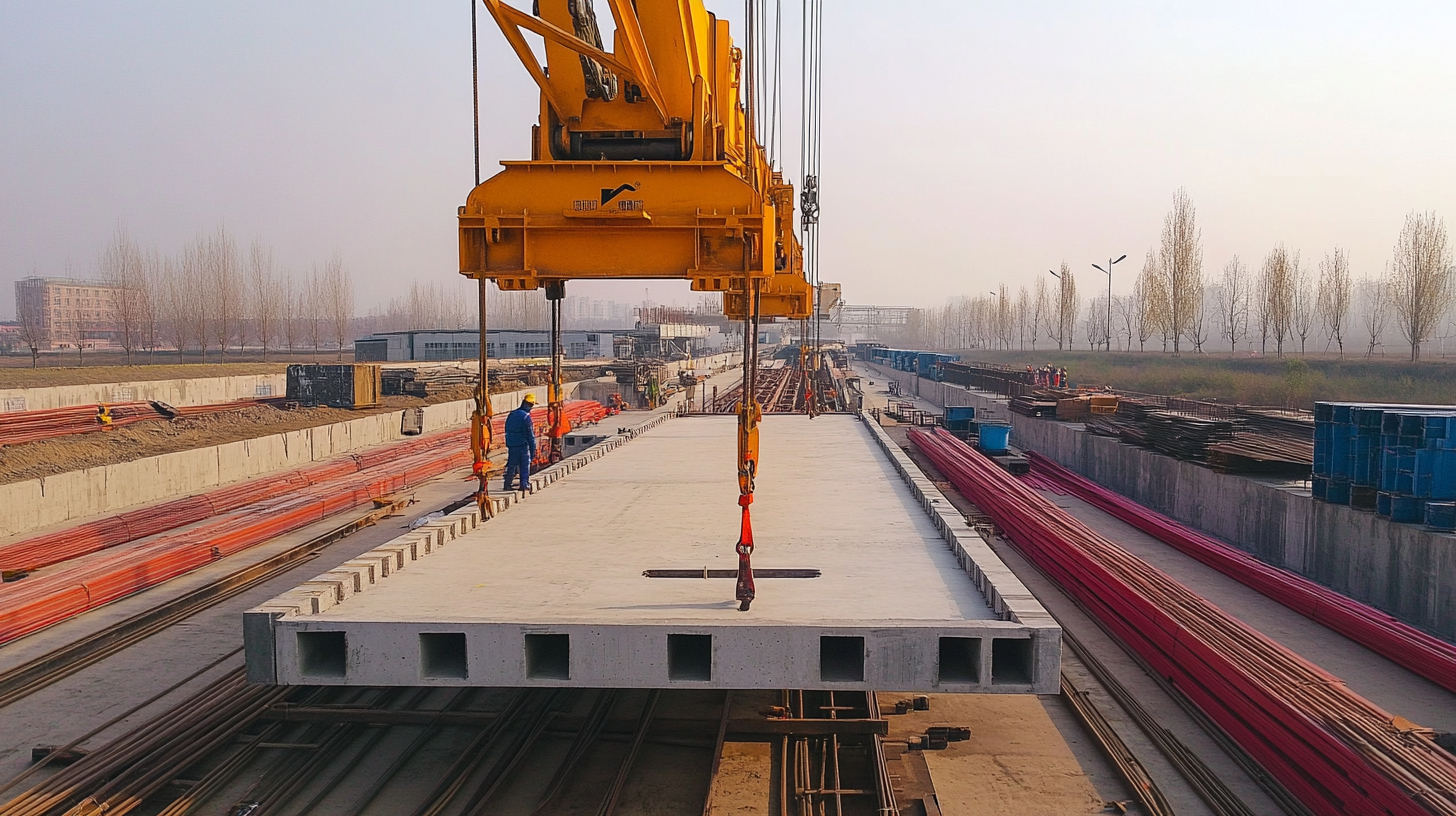In recent years, the precast concrete industry has demonstrated remarkable resilience, particularly in the face of ongoing trade tensions and tariffs imposed by the United States on Chinese products. As detailed in a recent report by the Global Precast Concrete Market Analysis, the global precast concrete market is projected to grow at a CAGR of 5.9%, reaching $189.23 billion by 2027. Specifically, the demand for Precast Concrete Lifting Eyes—a crucial component in the construction and transportation sectors—has seen significant upticks due to increased investments in infrastructure and housing projects across China. Despite the challenges posed by U.S.-China tariffs, which have affected supply chains and cost structures, Chinese manufacturers are leveraging innovative practices and local market advantages to not only sustain but grow their presence in the global market. This growth story underscores the adaptability of the industry and its pivotal role in supporting economic stability in turbulent times.

The ongoing US-China trade tensions have significantly impacted various industries, including precast concrete. As tariffs escalate, manufacturers in China face increasing costs to export their products to the United States. This situation forces many companies to adopt strategic pricing and seek alternative markets to mitigate the financial burden imposed by tariffs. Consequently, the precast concrete industry in China is compelled to innovate, enhancing quality while finding cost-effective solutions to maintain competitiveness in the global market.
Despite these challenges, China's precast concrete sector has exhibited remarkable resilience. Companies are leveraging new technologies and adopting lean manufacturing practices to improve efficiency. By focusing on automation and advanced production methods, they can offset some of the impacts of tariffs and sustain growth. Additionally, the demand for precast concrete in domestic infrastructure projects remains robust, providing a buffer against international market fluctuations. This adaptability is essential for the industry as it navigates the complex landscape shaped by tariffs and seeks to thrive amid adversity.

In the face of rising tariffs imposed by the United States, Chinese manufacturers in the precast concrete sector have quickly adapted their strategies to maintain resilience in the marketplace. By investing in innovative manufacturing techniques and improving operational efficiencies, these companies are not only minimizing costs but also enhancing product quality. This pivot towards advanced technology has allowed them to remain competitive, ensuring that their offerings meet international standards and customer expectations.
Moreover, Chinese manufacturers are expanding their presence in alternative markets. By identifying regions with less stringent trade regulations, they are diversifying their export destinations. This strategic shift not only mitigates the impact of U.S. tariffs but also opens new avenues for growth. Collaborative ventures and partnerships with local firms in these markets further bolster their position, allowing for the sharing of resources and expertise, which is crucial for navigating the complexities of global trade.
This chart illustrates the growth in precast concrete production in China from 2018 to 2023, showcasing a consistent upward trend amidst the challenges posed by US-China tariffs. The increase from 150 million tons in 2018 to an estimated 190 million tons in 2023 reflects the resilience and adaptability of Chinese manufacturers in overcoming tariff barriers.
In recent years, the precast concrete industry in China has demonstrated remarkable resilience, largely due to its strong focus on innovation. Amidst ongoing US-China tariff challenges, companies have invested in advanced technologies such as automated production lines and digitized project management systems. These innovations not only streamline operations but also enhance the quality and efficiency of precast concrete products, making them more competitive in both domestic and international markets.
Moreover, innovation in design and engineering has allowed for greater customization and sustainability in precast concrete solutions. By adopting green materials and processes, manufacturers are addressing environmental concerns while meeting the diverse needs of urban development projects. This commitment to both technological advancement and ecological responsibility positions China's precast concrete sector not only as a leader in innovation but also as a critical player in the global construction landscape. The ability to adapt and innovate in response to economic pressures speaks volumes about the industry's potential for sustained growth and success.
| Year | Production Volume (Million Tons) | Growth Rate (%) | Market Share (%) | Innovation Index |
|---|---|---|---|---|
| 2018 | 75 | 5.0 | 18 | 75 |
| 2019 | 80 | 6.7 | 20 | 80 |
| 2020 | 72 | -10.0 | 15 | 78 |
| 2021 | 85 | 18.1 | 22 | 82 |
| 2022 | 90 | 5.9 | 25 | 85 |
| 2023 | 95 | 5.6 | 30 | 87 |
The precast concrete industry is experiencing notable trends even amidst the global economic challenges brought on by US-China tariff disputes. In China, the resilient growth of this sector reflects a robust demand for construction materials that can withstand geopolitical uncertainties. As the government continues to invest in infrastructure projects, the use of precast concrete has surged, providing quicker assembly times and enhanced durability, which is particularly advantageous in a fast-paced construction environment.
Furthermore, companies are increasingly adopting innovative manufacturing technologies to improve efficiency and sustainability. Automation and digitalization are reshaping production processes, allowing for better quality control and reduced waste. As clients become more eco-conscious, there’s also a shift towards greener materials and methods within the precast concrete sector. This transformation not only addresses environmental concerns but also positions manufacturers to remain competitive in a market that is evolving towards sustainability and resilience, ultimately ensuring continued growth despite external pressures.
China's precast concrete manufacturing sector is poised for robust growth, even amidst ongoing challenges from tariff disputes with the US. The global precast concrete market, valued at approximately USD 146.1 billion in 2022, is projected to surge to USD 235.1 billion by 2031. This expected growth is largely driven by increased infrastructure demands, particularly within urban areas where rapid development is essential to accommodate rising populations.
Looking ahead, the future of precast concrete manufacturing in China appears bright. With a continual focus on innovation, the industry is embracing sustainable practices and integrating technology to enhance efficiency. There is also a burgeoning interest in modular construction, which aligns well with energy-efficient designs and aesthetic customization. As China navigates economic hurdles, its commitment to investing in infrastructure and adapting to global market trends will play a pivotal role in sustaining growth within the precast concrete sector.

